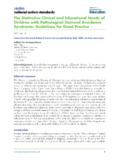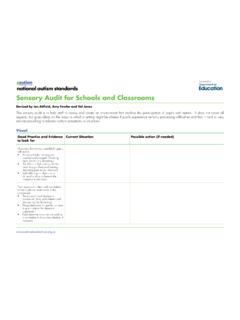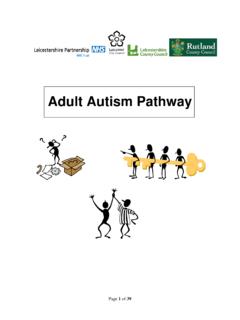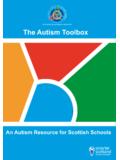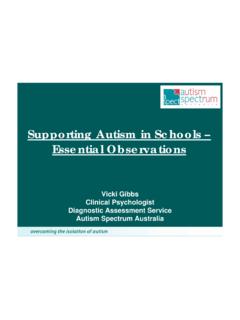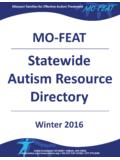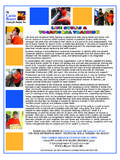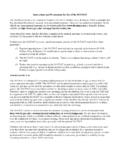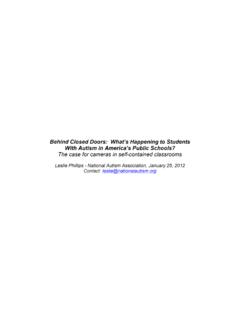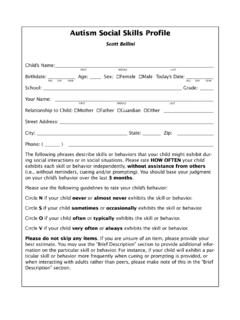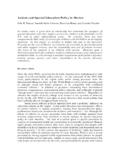Transcription of Supported by: national autism standards ard The …
1 national autism by:1 The SCERTS model : implementation and evaluation in a primary special schoolJan O Neill, Sunderland, UKPublished in the GAP Journal in May 2012, produced here by kind permission of BILDE ditorial commentAn increasing range of educational, communication, behavioural, sensory, and relationship-based interventions for children on the autism spectrum are being used, both in special and mainstream school settings. As yet there is limited evidence for the efficacy of many interventions (Jordan, Jones, Murray 1998; Francis 2005; autism Intervention Research Trust 2006 2010; Parsons et al., 2009), but there is an emerging consensus on what constitutes good practice (eg NIASA, 2003; SIGN, 2007; DCSF, 2009). This paper evaluates the implementation of the SCERTS model (Prizant et al.)
2 , 2003) with four pupils on the autism spectrum within a primary special school. The author, Jan O Neill, a Senior Educational Psychologist, makes the point that SCERTS encompasses many of the key principles of good practice and can be seen as a way of working with children which alters the culture of the school and adult style, rather than as a single intervention. An excellent analysis has been made on the effects of the introduction of SCERTS based on data on the children s progress and the views of all the professionals involved in the work. IntroductionThere has been a strong emphasis in the past few years on developing tools to monitor and track the progress that young people make across many areas of their development. P Scales, PIVATS and national Curriculum data are now being widely used to collect data on progress at individual, local and national levels.
3 Whilst more precise data on children s academic progress is now routinely collected and monitored, fewer assessment tools are available to help measure progress in relation to the development of specific skill areas such as communication and social skills and these are not usually linked to a framework for the delivery of a specific curriculum. P Scales and PIVATS are seen as limited in their ability to adequately assess and monitor development in relation to specific social communication and behavioural skills, particularly in relation to children on the autism spectrum. IQ scores are often used as research outcome measures (Cohen, Amerine-Dickens, Smith, 2006; Smith et al., 2000; national Research Council, 2001) but there are concerns that these lack ecological validity; they do not measure meaningful changes within natural learning environments, do not address the core deficits in the autism spectrum and are particularly problematic for young children (ASHA, 2006) Connor (2003) identified some ways in which a young person s progress, in relation to the autism spectrum could be measured and this led us to developing a profile for children with a diagnosis.
4 Within this profile we tried to identify those specific skills that we wanted to address in the delivery of our curriculum within a specialist primary school for young children on the autism spectrum. Access to training using the SCERTS (Social Communication, Emotional Regulation and Transactional Support) model developed by Prizant, Wetherby, Rubin & Laurent (2003) led to us implementing a small scale pilot within a primary special autism by:2 primary special school Columbia Grange is a primary special school for children on the autism spectrum and/or learning difficulties and also the base for the local multi agency autism Outreach Team. It is recognised as an outstanding school in its most recent Ofsted inspection in 2008 and there is a strong commitment to ongoing development with an emphasis on multi disciplinary work within the school.
5 The rationale for choosing the SCERTs model was: to explore whether this was a meaningful framework to assess, monitor and track pupil progress for children on the autism spectrum to set relevant targets based on consultation with families to identify targets that address the key areas of difficulty associated with the autism spectrum to develop reflective practice and a collegiate approach within the multi agency team to adopt a model that is grounded in evidence based SCERTS modelThe SCERTS model , (Social Communication, Emotional Regulation and Transactional Support) is a non-exclusive framework for delivering a curriculum specifically designed to address the key areas of difficulty experienced by young children on the autism spectrum. It has a significant research basis.
6 The SCERTS manual devotes a chapter to considering the evidence to support the view that the model is consistent with evidence-based practice (Prizant, Wetherby, Rubin, Laurent & Rydell 2006). They acknowledge that research evidence can vary in terms of methodology and have developed a table of current research findings that support one or more domains of the SCERTS model . These research findings include randomised clinical trials, quasi-experimental group treatment designs, single case experimental designs and case-control cross- sectional or longitudinal descriptive group research an inclusive framework, the SCERTS model can incorporate a wide range of different interventions and approaches (eg TEACCH (Schopler and Mesibov, date???, Picture Exchange Communication System (PECS)(Bondy and Frost, 1994), and Intensive Interaction (Nind and Hewett, 1994) and allows for specific goal setting that relates directly to the key areas of difficulty recognised in the triad of impairments.))
7 The development of SCERTS is heavily influenced by the work of Vygotsky (1978) with the need for the identification of the zone of proximal development which clarifies the emerging skills. Learning is viewed as socially mediated with an emphasis on social partners who provide appropriate scaffolding to enable the child to successfully learn and acquire principles of the SCERTS modelThe key principles of the model are as follows: Fostering spontaneous, functional communication should be viewed as the most critical educational priority for children on the autism spectrum Goals and activities should be developmentally appropriate and functional, relative to a child s adaptive abilities and the necessary skills for maximising enjoyment, success and independence. Natural routines across, home, school and community environments provide the educational and treatment contexts for learning All behaviour is viewed as purposeful Social partners are viewed as much a part of the problem as part of the solutionLong term positive outcomes for young children on the autism spectrum are seen as directly related to the development and achievement of functional social communication skills.
8 Research suggests that early intervention that directly targets joint attention, imitation and play abilities appears to support the development national autism by:3of social and language skills for these children (Watson & Flippin, 2008).The core domains of the SCERTS model focus on Social Communication, which has as its stated aim as helping a child to be an increasingly competent, confident and active participant in social activities and Emotional Regulation, which focuses on supporting a child s ability to regulate emotional arousal . (Prizant, Wetherby, Rubin, Laurent & Rydell, 2006). If a child has a weak capacity to self monitor their physical arousal and emotional state they are less likely to be able to attend to and access social interactions and learning SCERTS model places equal weight on the role of Transactional Support in terms of the interpersonal support a social partner can give and the range of environmental supports such as visual and sensory strategies to support learning and emotional domains of the SCERTS modelThe core domains are: Social Communication: goals to help the child be a competent, confident and active participant in a social achieve this a child needs to develop competencies in two key areas: Joint attention and Symbol UseEmotional Regulation.
9 The capacity to self monitor levels of physical arousal and emotional states in terms of Self Regulation and Mutual Support: This includes the adjustments made by the communicative partner in terms of their interpersonal skills and adjustments made to the environment to foster positive learning outcomes: Interpersonal Support and Learning Support (environmental support)The SCERTS model identifies three partner stages at which a child may be interacting in a social world, and observational assessment and target setting is directly linked to the identified partner stage. These partner stages are: Social Partner: where a child is using fewer than 3 words or phrases (which may be spoken, signed, pictured, written words or other symbolic system) referentially, regularly and with communicative intent.
10 Language Partner: where a child uses more than 3 words or phrases (which may be spoken, signed, pictured, written words or other symbolic system) referentially, regularly and with communicative intent. Conversation Partner: where a child uses at least 100 words or phrases (which may be spoken, signed, pictured, written words or other symbolic system) referentially, regularly and with communicative intent. And can use at least 20 different word combinations that are a child s partner stage has been agreed, detailed observations take place across a range of settings within school, home and the community using the SCERTS Assessment Process (SAP).Multi disciplinary roles and processesWithin the multidisciplinary team, discussions took place as to our relative roles.




